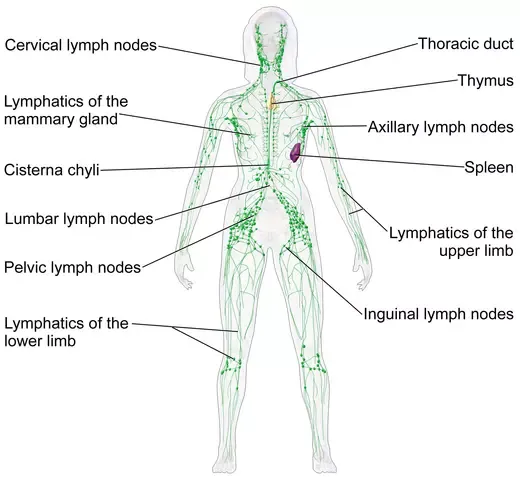How Does the Lymphatic System Work?

Curious about how the lymphatic system works? Well, it is part of your immune system. And it is associated with the immune system in such a way that the two systems are almost indifferent. In everyday conversations, you might even hear people use the terms interchangeably.
What is the Lymphatic System?
The lymphatic system is usually described as our body's drainage or sewerage system. It collects and transports excess fluids from our tissues back to the bloodstream. Functionally, this system works in a similar manner like the circulatory system, with the exception that the lymph drainage follows a one-way flow rather than a circulation.
This system consists of all cells, tissues, and organs containing lymphocytes. These include:
- lymph organs such as red bone marrow, thymus gland, spleen, lymph nodes, and lymphoid nodules;
- lymph capillaries;
- lymph vessels; and
- lymph ducts.
How the Lymphatic System Works
Due to blood pressure in the circulatory system, components of blood – mainly water, but also solutes like electrolytes and nutrients – regularly exit or leak from blood vessels and enter the interstitial spaces (spaces between individual cells in the tissues). Once tissue fluids leave the bloodstream and enter tissue spaces, they are called as interstitial fluid or lymph.
Fun Fact: nearly 20 liters of fluids are released into the interstitial spaces each day – that is roughly 11% of all our body fluids.
From interstitial spaces, the lymph is forced into the lymphatic system by the contraction of skeletal muscles during body movements. The lymphatic capillaries collect the lymph from the interstitial spaces, and through lymphatic vessels (merging lymph capillaries), it is carried to the lymphatic ducts. Interconnecting lymphatic ducts eventually dump it into the subclavian veins via one of two principal vessels, the right lymphatic duct and left lymphatic duct (also known as thoracic duct).
- The right lymphatic duct carries lymph from the upper right side of your body to the right subclavian vein.
- The thoracic duct drains lymph from the rest of the body into the left subclavian vein.
Along the way, the lymph passes through a series of lymph nodes (small, bean-shaped organs), which filter debris and foreign invaders, such as bacteria and virus, from the lymph.
Fun Fact: Our bodies have about 500-600 lymph nodes located throughout the lymphatic system.
Learn about how does the nervous system work
Functions of the Lymphatic System
The lymphatic system performs many functions in our bodies. Among the most notable are the following:
- maintaining fluid balance in the body,
- filtering pathogens from the blood,
- absorbing fatty substances from the small intestine, and
- supporting the blood and circulatory system.
However, of the many functions it does, the most remarkable one is defending the body against microorganisms and other harmful foreign substances or antigens. When microorganisms and other foreign invaders enter into the body, the components of lymphatic system filters these harmful invaders and release antibodies.
Image source: Bruce Blaus (Own work), CC-BY-3.0, via Wikimedia Commons


